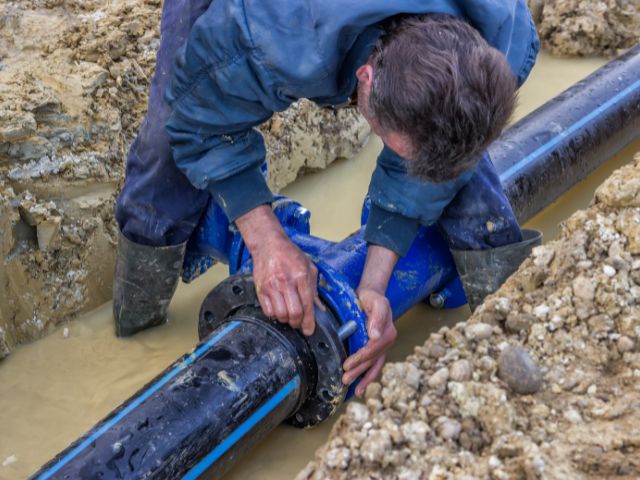
 education
education 
Backflow occurs when water within a service line reverses flow and enters the potable water supply. Often, this backflowing water is filled with harmful pollutants, waste, and contaminants. Considering the country’s entire plumbing grid is comprised of cross-connections between public and private plumbing systems, the need for proper water protection is vital. Read on to learn the human risks associated with plumbing backflow and how special prevention devices keep communities healthy and safe.
The biggest concern related to plumbing backflow is the rapid spread of waterborne illnesses. Some of the most deadly disease outbreaks in human history were caused by typhoid, amoebiasis, legionnaires, dysentery, and hepatitis—all viruses that can come from private water service lines during backflow. For instance, a backflow occurrence in Chicago in 1985 resulted in salmonella spreading throughout the city, impacting well over 100,000 residents.
In this situation, antibiotic-resistant salmonella strains living in the piping of surrounding dairy farms entered potable water supplies. Additionally, the salmonella virus infected dairy cows, subsequently contaminating commercially available milk and harming consumers. Luckily, the existence of quality backflow prevention devices enhances cross-connection security and reduces the likelihood of these complications occurring again.
While rare, instances of plumbing backflow can result in physical harm to individuals. For example, chemicals from processing plants and other businesses can enter public service lines, introducing them into private residences. In some cases, this toxic water comes through shower and sink faucets, leading to burns and other harmful health complications.
Chemicals such as sodium hydroxide are extremely destructive to organic life. They are a massive concern for communities situated near industrial facilities and plants. In the event of a water main rupture, nearby sodium hydroxide and related contaminants would infiltrate homes without the help of backflow preventers.
The negative environmental impact of large-scale backflow instances also affects humanity. When toxins such as gasoline, chlordane, and heptachlor leach into nearby ecosystems, the natural wildlife also becomes contaminated. For communities that rely on their wildlife for food or business, this environmental harm can be catastrophic. Environmental damages can impact agriculture, housing, and other essential societal sectors that keep an area functioning and alive.
Aside from the human risks associated with plumbing backflow, this hazardous phenomenon can physically damage existing infrastructure and surrounding public service lines. That’s why reduced pressure and double-check preventers are essential devices. This equipment stops reverse flow from occurring before people are negatively impacted.
24World Media does not take any responsibility of the information you see on this page. The content this page contains is from independent third-party content provider. If you have any concerns regarding the content, please free to write us here: contact@24worldmedia.com